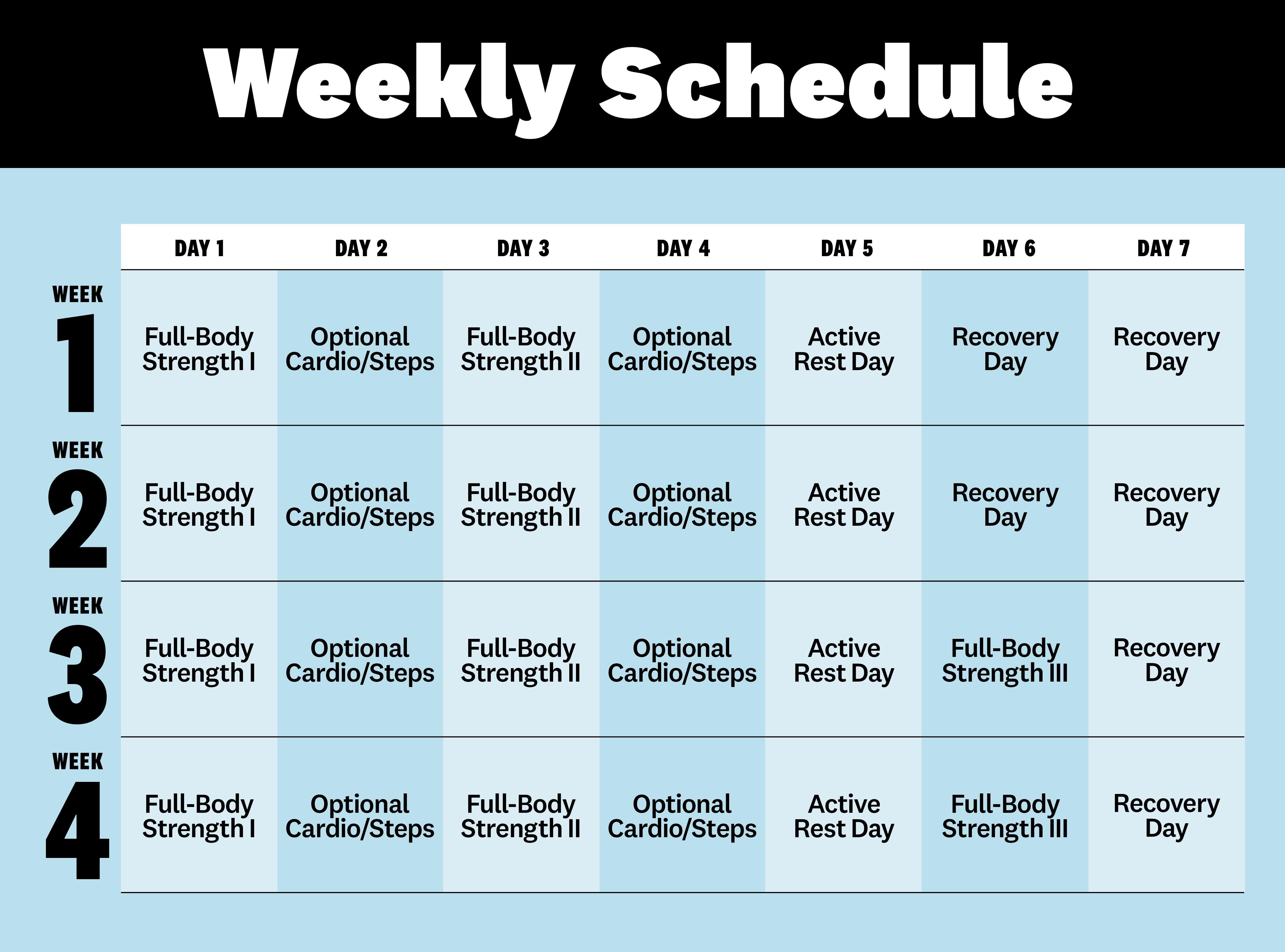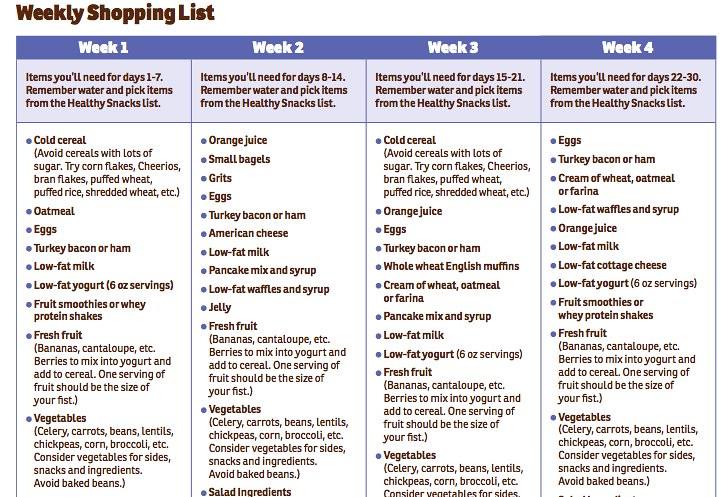In the bustling rhythm of modern life, where every tick of the clock seems to echo the demands of work, family, and personal ambitions, carving out time for fitness can feel like a formidable challenge. Yet, within the structure of a well-crafted weekly fitness plan lies the secret to transforming these challenges into triumphs. Imagine a symphony, where each day plays a distinct yet harmonious note in the grand composition of your health and well-being. Designing a weekly fitness plan for maximum results is not merely about checking off a list of exercises; it’s an artful balance of strategy, motivation, and understanding your body’s unique needs. This article unveils the canvas upon which you can paint your path to fitness success, blending science with creativity to help you achieve your goals while keeping pace with the demands of daily life. Whether you’re a seasoned athlete or just beginning your fitness journey, discover how to orchestrate your week to unlock your full potential and sculpt the healthiest version of yourself.
Crafting Your Fitness Vision: Setting Clear and Achievable Goals
Embarking on a fitness journey without a clear vision is like setting sail without a destination. To craft a fitness vision that truly motivates and guides you, begin by identifying what you want to achieve. Whether it’s increasing strength, improving endurance, or simply feeling healthier, these aspirations should resonate personally with you. Define your goals with precision—instead of vague intentions like “get fit,” aim for specifics such as “run a 5K in under 30 minutes” or “perform 10 pull-ups consecutively.”
- Be realistic: Align your goals with your current fitness level to avoid burnout or injury.
- Set milestones: Break down your ultimate goal into smaller, achievable steps to maintain motivation and track progress.
- Stay flexible: Life can be unpredictable; be prepared to adapt your plan as needed.
Write down your goals and revisit them regularly to remind yourself of your commitment and progress. This tangible reminder can serve as a powerful motivator, keeping you on track and focused on your path to fitness success.

Balancing Act: Integrating Cardio, Strength, and Flexibility
Crafting a balanced fitness regimen requires a harmonious blend of cardio, strength, and flexibility. Each element serves a unique purpose in enhancing your overall health and performance. Cardio exercises, such as running, cycling, or swimming, are vital for improving heart health and increasing endurance. They should be included at least three times a week to ensure a solid cardiovascular foundation. On the other hand, strength training is crucial for building muscle mass, boosting metabolism, and fortifying bones. Aim for two to three sessions weekly, focusing on different muscle groups to allow for recovery and growth.
Equally important is incorporating flexibility exercises, which often get overlooked. Activities like yoga or Pilates enhance range of motion, reduce injury risk, and promote relaxation. Consider adding these to your routine two to three times a week. A well-rounded weekly fitness plan might look like this:
- Monday: Cardio (30 minutes) + Light Stretching
- Tuesday: Strength Training (Upper Body)
- Wednesday: Flexibility (Yoga or Pilates)
- Thursday: Cardio (Interval Training)
- Friday: Strength Training (Lower Body)
- Saturday: Active Recovery (Light Walk or Swim)
- Sunday: Rest or Gentle Stretching
By skillfully weaving these elements into your weekly routine, you not only work towards maximum results but also foster a sustainable, enjoyable approach to fitness.

Nutrition and Recovery: Fueling Your Body for Success
Incorporating nutrition into your recovery process is crucial for achieving your fitness goals. Fueling your body with the right nutrients can enhance your performance and speed up recovery time. Start by ensuring that your diet is rich in macronutrients such as carbohydrates, proteins, and healthy fats. Carbohydrates replenish glycogen stores, while proteins repair muscle tissues, and healthy fats provide sustained energy.
- Carbohydrates: Opt for whole grains, fruits, and vegetables.
- Proteins: Include lean meats, legumes, and dairy products.
- Healthy Fats: Avocados, nuts, and olive oil are excellent choices.
Hydration is another key factor. Drink plenty of water throughout the day, and consider electrolyte-rich drinks after intense workouts to maintain balance. Additionally, focus on consuming anti-inflammatory foods like berries, leafy greens, and fatty fish to reduce muscle soreness. By integrating these nutritional strategies into your fitness plan, you set a solid foundation for success.

Tracking Progress: Tools and Techniques for Continuous Improvement
Achieving your fitness goals requires a strategic approach that combines tracking progress with effective tools and techniques for continuous improvement. By implementing a few key strategies, you can ensure your weekly fitness plan not only meets your immediate needs but also supports long-term growth and development. Here are some essential tools and techniques to consider:
- Fitness Trackers: Utilize wearable technology to monitor your daily activity levels, heart rate, and calorie expenditure. This data can help you adjust your workouts to better align with your goals.
- Progress Journals: Keep a detailed log of your workouts, including exercises, sets, reps, and weights. This will help you identify patterns and areas for improvement over time.
- Weekly Assessments: Set aside time each week to review your progress. Evaluate what’s working, what isn’t, and make necessary adjustments to your plan.
- Goal Setting: Clearly define your short-term and long-term fitness objectives. Break them down into manageable milestones to maintain motivation and focus.
Incorporating these tools into your routine not only helps in tracking progress but also empowers you to make informed decisions that lead to continuous improvement and maximum results.
Wrapping Up
In crafting your weekly fitness plan, you’ve embarked on a journey that goes beyond mere routines and repetitions; it’s a commitment to nurturing your body and mind. As you lace up your sneakers and step into each new day, remember that this plan is more than a guide—it’s a living blueprint, adaptable to your evolving needs and aspirations. Whether you’re lifting weights, stretching into a yoga pose, or running that extra mile, each movement is a testament to your dedication and resilience. Embrace the process, celebrate the small victories, and don’t be afraid to tweak your plan as you grow. After all, the path to maximum results is not just about reaching a destination, but about savoring every step along the way. Keep moving, keep striving, and let your fitness journey unfold with purpose and passion.

